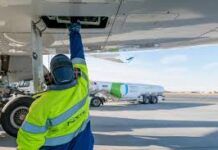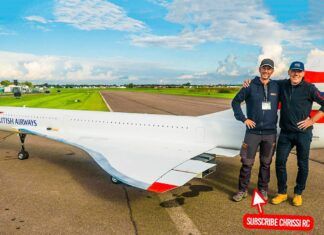If there’s anything certain about second-guessing another pilot’s judgment after an accident, it’s this: The wreckage is Exhibit A if you insisted before the fact—or even after—that he shouldn’t have done whatever he did. If he pulls off what he shouldn’t have done without incident, he’s just crazy. But if he doesn’t, he’s crazy and stupid.
That seemed to be the reaction of whatever talking heads the local news outlets could roust up after a horrible accident here in Florida the day before Christmas. A Cessna 340 crashed on takeoff from Bartow, having departed in dense fog on a flight to Key West. Five people were killed in the accident. The ASOS had the weather at less than a quarter mile and 300 feet in calm wind. The local sheriff was aghast that the pilot would take off in such conditions, a perfectly understandable reaction. According to news reports, the 70-year-old pilot had earned his private certificate in 2010, but no reports that I could find gave his total time or time in type. He was a Florida resident, so that suggests not a lot of exposure to a range of IMC. Tellingly, he had the airplane towed to the ramp because he thought the vis was too low to taxi safely.
I know from long experience in writing about such things that this is a binary judgment-type accident. That’s to say some pilots would be as shocked as the sheriff was while others would say, so what? I’m in the second group, albeit with some qualifications. When I was learning to fly instruments and later, when I instructed, simulated zero-zero takeoffs were commonly practiced. Sometimes these were done under the understanding that they were just a proficiency exercise and sometimes not. I told students if you want to do this in anger, that’s your business. But you better bring an A-game because there’s little margin for error.
I have done such takeoffs myself and have concluded a couple of things about them. First, zero-zero is a misnomer. I’ve never encountered conditions where I couldn’t see at least a few hundred feet of runway centerline or enough to accelerate and rotate. Second, in a single, this is at the far edge of the acceptable risk spectrum for me and is outside it for many people who automatically say no. For that reason, I’d never expose passengers to this risk. I did once—in Florida, perchance—but never repeated it. Third, my reasons for doing it were sporting—just to do it. I never did a low-vis takeoff because I had to be somewhere. My rule has always been no trip is so important as to take on marginal risk just to get somewhere. Ever. It’s probably a distinction without a difference that people fearful of jumping out of airplane doors might not get.
Being a lawman, the sheriff would probably be shocked to learn that there’s no specific regulation against low-visibility takeoffs for Part 91 operators. He might opine that there ought to be. Breaking that down, what’s the valid argument against a Part 91 takeoff minimum, say the standard Part 135 minimum of 1 mile? My sole argument against it is the usual boilerplate against over-regulation. It would be just another line item in the regs meant to forestall—or at least discourage—a very rare kind of accident indeed. Part 91 exists to be not like Part 121 or Part 135. If you want to fly to those more restrictive guidelines, you’re free to do so. You could even have your own drug testing program.
Despite all our yapping about it, Part 91 remains—relatively—the wild west. As regulations go, it allows largely unfettered freedom to you, the individual, to operate your personal airplane as you see fit. That’s just the way it is and ought to stay. The abiding attraction of general aviation is that is that it affords the individual the ultimate responsibility: the freedom to decide and to sometimes decide for others.
John Young: A True Extra Terrestrial
The weekend’s news feed brings the sad announcement that astronaut John Young has died. He succumbed to pneumonia at the age of 87. Although less known or perhaps celebrated than the early crews of Apollo—Neil Armstrong, Buzz Aldrin and Jim Lovell come to mind—he was inarguably the most accomplished of the NASA flight corps.
He flew in space six times. Twice on Gemini, twice on Apollo—including two trips to the Moon—and twice on the Space Shuttle. He commanded the first Shuttle mission in 1981, which marked the first time NASA had launched a manned system without preceding it with an unmanned test.
Young was a Navy veteran and an aeronautical engineer with a reputation for a piercing ability to understand and analyze complex spacecraft systems. He was highly critical in his career of NASA’s oversights in two major Shuttle accidents.
Last year, I read his autobiography, Forever Young. I recommend it. But my favorite anecdote about Young is mentioned in this clip from the film In the Shadow of the Moon. If you haven’t seen it—or heard Philip Sheppard’s fabulous score—I promise you this: You’ll watch it more than once.
As the Apollo astronauts enter their final years, we’ll be seeing more such announcements. And while I might have hoped they would all live forever, I’ll recuse myself from maudlin essays about the death of heroes. That’s an overused word and what people say when they can’t think of anything else. I never considered them heroes anyway, just the most visible stars in the bright constellation of remarkable people who put humankind on another planet. That’s legacy enough. I am privileged to have lived through it.

































